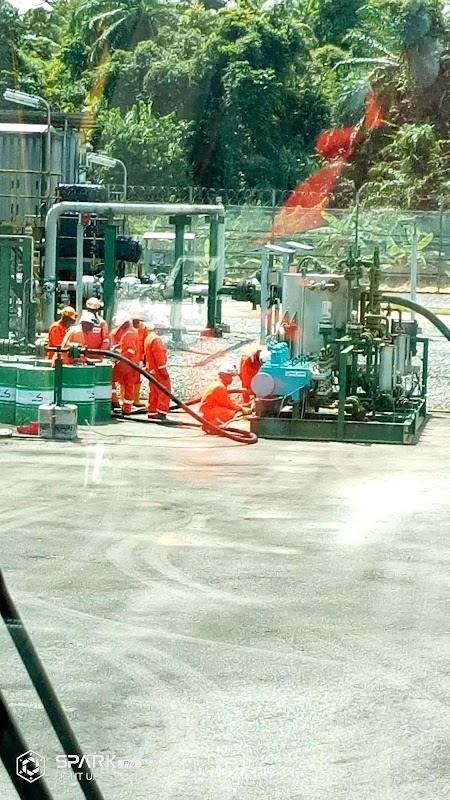
Experience the New Yam Festival in Yenagoa, Bayelsa—a powerful celebration of harvest, culture, and community. Dive into vibrant parades, traditional dishes, and scenic forest trails that bring local heritage to life for visitors ready to engage both culturally and physically.
Stay Hydrated Amidst Humidity
The tropical climate is humid and warm; carry at least 2 liters of water per person to remain comfortable during festival activities and hikes.
Wear Sturdy Footwear
Footpaths around Yenagoa and festival grounds include uneven, sometimes muddy terrain—opt for comfortable, durable shoes with good grip.
Plan for Early or Late Visits
Festival and trail exploration are best undertaken in cooler hours to avoid midday heat extremes that can drain your energy quickly.
Engage a Local Guide
Hiring a local guide enriches your experience with insider knowledge on customs, hidden festival highlights, and safe path navigation.
New Yam Festival in Yenagoa: A Vibrant Celebration of Culture and Harvest
Each year in the heart of Bayelsa State, Yenagoa bursts into life with the New Yam Festival, a spirited celebration marking the end of the harvest season and the beginning of a communal renewal. The festival is more than a procession; it’s a practical embrace of tradition where locals honor the yam, the staple that sustains and fuels their daily lives. From the first day, the air vibrates with drumbeats that dare visitors to feel the pulse of a culture fiercely proud and welcoming.
During the festival, the streets transform into stages for traditional dances and colorful masquerades that move with purpose through the crowds. This festival’s terrain is both urban and natural—markets overflowing with fresh yams and locals dressed in vibrant, handwoven fabrics create scenes rich in texture and life. Yam dishes – roasted, pounded, and mashed – invite everyone to taste the fruits of hard work under the equatorial sun.
For travelers mapping their visit, the festival timing aligns closely with the yam harvest, usually between late August and early October, offering a window into Bayelsa's agricultural rhythms. Preparation is key: staying hydrated in the humid climate and wearing durable footwear to explore both bustling market paths and softer, occasionally muddy grounds around nearby farms.
Adventure seekers interested in integrating some trail exploration into their visit will find nearby forested paths leading towards the outskirts of Yenagoa, where nature reasserts itself fiercely. These trails offer a practical hike, roughly 5-8 kilometers round trip with gentle to moderate elevation changes. The lush environment—the green canopy daring you onward and riffles of water pushing past roots and stones—creates a dynamic backdrop to the cultural festival.
This sensory immersion is balanced with practicality: plan your visit to avoid midday heat peaks; early mornings and late afternoons are best for both the community events and the natural trails. Local guides can enrich your experience, connecting you to lesser-known festival rituals and hidden viewpoints overlooking Bayelsa’s water-rich landscape. The New Yam Festival, therefore, becomes not only a cultural event but a multi-dimensional adventure where tradition, nature, and community intersect and challenge you to appreciate each on their own terms.
Nearby Trips
All Adventures
Boat Charters
Water Activities
Adventures near Yenagoa, Bayelsa
Discover the unique and memorable adventures that make Yenagoa, Bayelsa special.
Frequently Asked Questions
When is the New Yam Festival held in Yenagoa?
The festival typically takes place between late August and early October, coinciding with the yam harvest season in Bayelsa State.
Can visitors participate in the New Yam Festival activities?
Yes, visitors are welcomed warmly. While some rituals are reserved for locals, many dances, feasts, and markets are open for public enjoyment and participation.
Is there a best time of day to enjoy the festival and local hikes?
Early mornings and late afternoons are ideal to avoid midday heat and catch the festival at its liveliest. Trails are also safer and more comfortable during these times.
Are the hiking trails around Yenagoa suitable for beginners?
Yes, the trails are generally moderate with well-marked paths, but some sections may be slippery or uneven, so a reasonable level of fitness is recommended.
What wildlife might I see during the festival or nearby trails?
Look out for forest birds like the African grey parrot, butterflies, and small mammals that inhabit the lush Bayelsa woodlands surrounding Yenagoa.
Are there environmental considerations visitors should be aware of?
Visitors should respect natural and cultural sites by avoiding littering and staying on designated trails, helping preserve the area's vibrant ecosystems and cultural landmarks.
Recommended Gear
Lightweight breathable clothing
Helps you stay cool and manage sweat in warm, humid conditions.
Water bottle or hydration pack
Staying hydrated is crucial in humid Bayelsa weather especially during prolonged outdoor activities.
Sturdy hiking shoes
Protects your feet on uneven, muddy trails and rough festival terrains.
Rain poncho or light waterproof jacket
Afternoon rains can arrive suddenly; keep dry and continue exploring without interruption.
Local Insights
Hidden Gems
- "Okujaye River viewpoint offers a quieter spot to watch fishermen at work away from the festival’s bustle."
- "Behind the main square, a small sacred yam shrine is open to respectful visitors seeking deeper cultural insight."
Wildlife
- "Watch for the vibrant black-and-white pied hornbills flying between the trees."
- "Small forest monkeys occasionally appear near trail edges, curious but shy."
History
"The New Yam Festival has roots in ancestral gratitude, marking yams as both life source and cultural marker, reflecting Bayelsa’s deep agricultural heritage."
